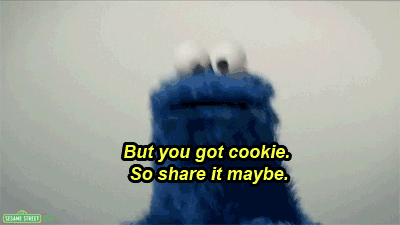[Ed: Ash Genete is the newest addition to Spiralytics’ Content Marketing Team. He manages the content strategy of some of our clients and then runs to his postgraduate classes after work amidst crazy Manila traffic. We honestly don’t know how he does it. #mysteriesoflife. Say hello to Ash!]
If readers were hungry customers, our duty as content marketers would be to serve what satiates their cravings. Offer them with content-rich posts if the appetite for information is huge. But if the craving is not much, feed them with something light and easy to digest. The bottomline is if you want to reach more customers, widen your business blogging menu. This is why every content marketer should know about snackable content and big content.
Some would say that big content performs better than the small ones. Others would disagree. But to pit snackable content and big content against each other is ridiculous. Each serves its purpose. So the question is not which of the two is better. It is how and when to make both work for you. Here’s a short read to know how both content types can beef up your strategy.

Big Content: Meaty and Information-Heavy
Big content is what you concoct when 300 – 500 words are not enough to feed Joe’s brain because of his insatiable hunger for new and specialized knowledge. It’s your Ultimate Guide to Information Overload or lengthy infographics that tease the brain cells. It appeals to those who have the luxury of time to read and learn from you, which also gives you higher engagement. Therefore, it works if thought leadership is what you have in mind. And because they’re heavy on information and sometimes on graphics too, big content is like Ed Sheeran’s description of his honey’s soul – it’s evergreen.

Also, big content may help you achieve better page ranking. The Sales Lion founder Marcus Sheridan explained this:
“If Google has a choice to show two articles for the same keyword, which one are they going to choose: The one where readers average 45 seconds on the page or the one where readers average 4.5 minutes on the page?”
But of course, length alone cannot promise you that, quality still matters.
Snackable Content: Light and Easy to Digest
Unlike big content which gives depth to the topic, snackable content is often fun and entertaining. These are your fast facts, top 10s, memes, Vine videos, Buzzfeed-inspired post and bulleted write-ups. It is content marketing’s best answer to people with short attention span. It is what you serve if you want to connect to busy and lazy readers because it’s fast and easy to digest. People on the go can consume it even via their smartphones. They can scan or skim the content without going through everything.
Snackable content could also be your best chance to reach every Jack, Maria, Sophie and Kaito. Remember how people love to share chips, cookies and candies? Same thing goes with content. People take a bite and share. And because it is mobile-friendly, snackable content is much easier to pass on to social media friends. In other words, it has the tendency to become viral. Thus, snackable content may work for you if you’re aiming for brand awareness.

Use Both Big and Snackable Content to Achieve Content Marketing Goals
Both big content and snackable content are worth creating, sharing and curating. The key is to make both work for you by aligning them with your business blogging objectives. Be sure that when you produce them, the quality is tasteful enough that your target niche will want to consume and share them.
{{cta(‘600a041e-e2d7-4435-8dde-b499b8c98dd9’)}}



